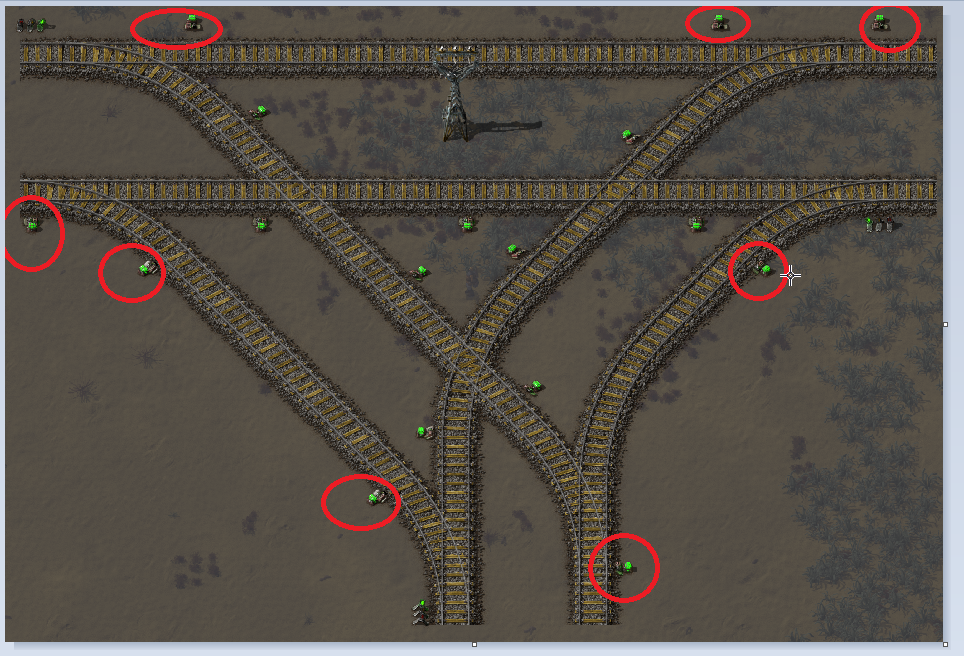I don't know which version those numbers are from but in 0.15.10 both setups have a top speed of 298.1 km/h when rocket fuelled, the 1-4-1 just takes longer to get there. I'd guess this means that intersections that already have low throughput will be hit harder than the cross one as trains are less likely to have to stop in that design, compare that to the low throughput roundabout or something where the trains are always sitting at the intersection and waiting their turn.AndrewIRL wrote:I was wondering how throughput would be affected with 1-4-1 trains. In theory the lower speed of 1-way vs 2-way trains should mean a significant decrease in throughput.
The 1-4-1 train has only 52.93% the speed of the 2-4-0 so I would predict that the maximum throughput will be somewhere in the range: 20-26 down from 64 for the highest throughput intersection.Code: Select all
LL-CCCC, ratio = 2, top speed = 259.2 L-CCCC-L, ratio = 6, top speed = 134.6
Maybe you would be willing to test just one intersection, the big 64 throughput cross?
I might be willing to run some tests once the theory seems at least plausible



